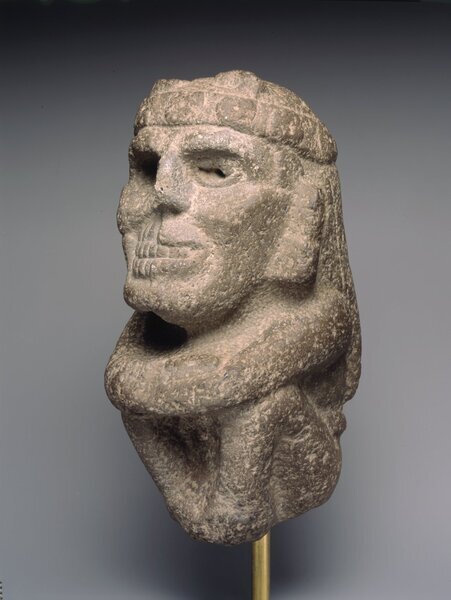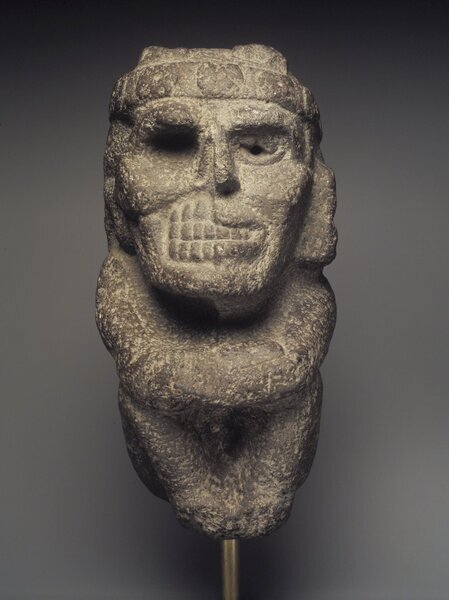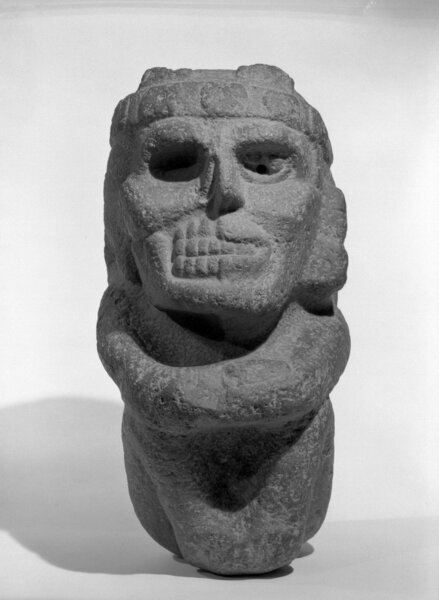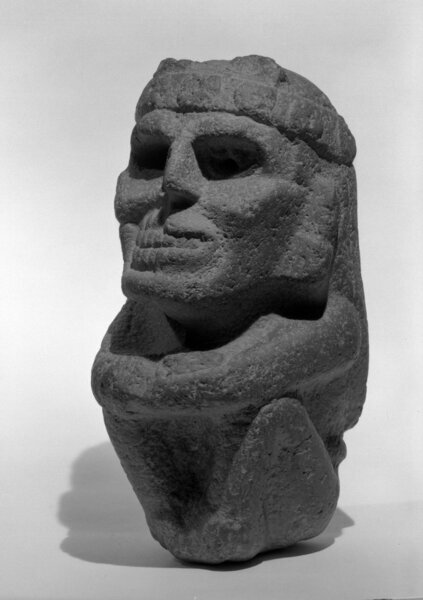Life Death Figure Item Number: 64.50 from the Brooklyn Museum




Description
Aztec stone figure. The circles on the headdress represent fire and the two horn-like projection on top of the head help identify the figure as Xiuhtecuhtli, the Lord of Fire. This deity was associated with fire and life as well as with the household hearth where food was prepared and household rituals were performed.The left side of the head represents life; the right side symbolizes death. This is an unusual representation of this deity. The body is a simple abstract form. Condition: Right arm has repaired crack. Conservation observed damage to nose in 1984; tip had been broken off and lost; area was tinted with watercolors to make it less apparent. Condition generally good. Overall surface wear. Recessed brass hole for mount.
Credit Line
Purchased with funds given by The Henfield Foundation
Label
The face on this small yet powerful sculpture exemplifies the dualism of ancient Mesoamerican religion with respect to life and death by combining a skull with lifelike features. Previous interpretations, based on the two-horned headdress and jeweled headband, identified the figure as Xiuhtecuhtli (Lord of Fire) or Tonacatecuhtli (Lord of Sustenance). More recent scholarship suggests that the two horns or tufts may refer to the two temples crowning the Templo Mayor, the Mexica (Aztec) ceremonial center that dominated the capital of Tenochtitlán, in present-day Mexico City. The temples were dedicated to Huitzilopochtli (Lord of Warfare) and to Tlaloc (Lord of Rain and Fertility).
La cara de esta pequeña pero poderosa escultura ejemplifica el dualismo de la antigua religión Mesoamericana con respecto a la vida y la muerte, al combinar una calavera con una cara de rasgos vitales. Interpretaciones previas, basadas en el tocado de dos cuernos y cintillo enjoyado, identificaban la figura como Xiuhtecuhtli (Dios del Fuego) o Tonacatecuhtli (Dios del Sustento). Recientemente académicos han sugerido que los dos cuernos pueden referirse a los dos templos que coronaban el Templo Mayor, el centro ceremonial Mexica (Azteca) que dominaba la capital de Tenochtitlán, en la actual Ciudad de México. Los templos estaban dedicados a Huitzilopochtli (Dios de la Guerra) y a Tlaloc (Dios de la Lluvia y Fertilidad).
Item History
- Made between 1200 and 1521
What
- Name
- Life Death Figure
- Identification Number
- 64.50
- Type of Item
- figure and life
- Material
- volcanic stone
- Overall
- length 10.5 in, width 5.5 in, height 6.125 in
Who
- Culture
- Mexica
Where
- Holding Institution
- Brooklyn Museum
When
- Creation Date
- between 1200 and 1521
Other
- Location
- Arts of the Americas Galleries, 5th Floor
- Classification
- Sculpture